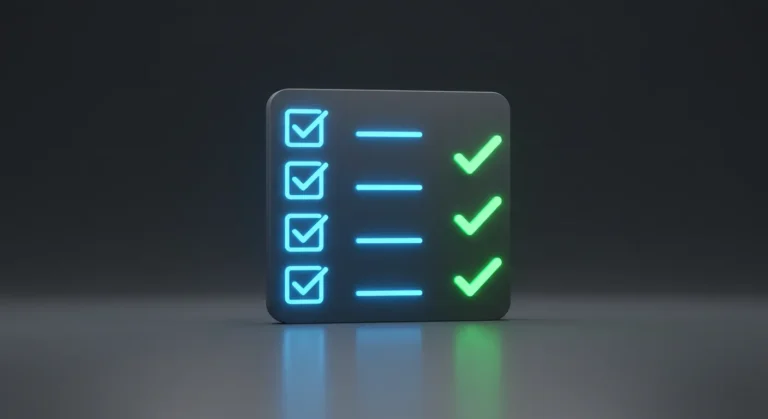What are the 7 simple steps in budgeting? If you’ve ever found yourself staring at a pile of bills, wondering where all your money went each month, you’re not alone. Creating a budget can feel overwhelming, but it doesn’t have to be. In fact, budgeting is not just a numbers game; it’s the key to unlocking financial clarity and control over your life. Whether you’re aiming to save for a vacation, pay off debt, or simply get a better grasp on your finances, understanding these seven straightforward steps can make a remarkable difference.
The relevance of budgeting goes beyond just numbers; it fosters a deeper understanding of your spending habits and priorities. As we navigate through our financial lives, having a clear budgeting strategy allows us to make informed decisions and set achievable financial goals. It’s time to take control and empower yourself with the knowledge to budget effectively!
Imagine sitting down with your favorite drink, pen in hand, ready to design a financial roadmap tailored specifically for you. Picture the relief of seeing your financial goals becoming attainable. Budgeting can transform your approach to money management, making it not just a task to check off your list, but a liberating practice that enhances your everyday life.
With a focus on simplicity and clarity, let’s dive into the seven essential steps of budgeting that will demystify the process and transform your financial journey.
Step 1: Define Your Financial Goals
The first step to effective budgeting is to clearly define your financial goals. Ask yourself what you want to achieve in the short, medium, and long term. Are you looking to save for a large purchase, establish an emergency fund, or pay down debt? Setting SMART goals—Specific, Measurable, Achievable, Relevant, and Time-bound—can provide the framework for your budgeting success.
Setting SMART Goals
Let’s say you’re looking to save up for a vacation. Instead of saying, “I want to save for a vacation,” refine it to, “I will save $2,000 for a beach vacation in 12 months.” This clarity helps you understand how much you need to save each month.
Step 2: Track Your Income
The second step is to assess your income. This isn’t just about your salary—include any side hustles, bonuses, or passive income streams you might have. Document your income sources thoroughly to get an accurate sense of your financial situation.
Understanding Net vs. Gross Income
It’s important to distinguish between gross income (the total amount you earn before taxes) and net income (your take-home pay). For budgeting purposes, you should primarily focus on your net income, as this is what you have available for spending and saving.
Step 3: Categorize Your Expenses
In this step, it’s time to break down your expenses into fixed and variable categories. Fixed expenses are the regular payments you can’t change easily, such as rent or mortgage, while variable expenses might include groceries and entertainment. This distinction allows you to see where your money goes and where you can make adjustments.
Creating Expense Categories
Consider using these categories for your budgeting process:
- Housing: Rent or mortgage, utilities
- Transportation: Car payments, gas, public transport
- Food: Groceries, dining out
- Debt Payments: Credit cards, loans
- Entertainment: Subscriptions, outings
Step 4: Analyze and Adjust Your Spending
Once you’ve tracked your expenses, it’s time for an honest look at your spending habits. This step requires you to compare your income against your expenses and evaluate whether you can live within your means. If your expenses exceed your income, it’s a clear signal that adjustments are needed.
Identifying Areas for Cuts
Maybe you’re spending $50 a month on that subscription service you rarely use? By trimming these little expenditures, you can save up for your most important financial goals without sacrificing enjoyment in your life.
Step 5: Set Your Budget
Now that you’ve examined your goals, income, and expenses, it’s time to create your budget. This should be a living document that evolves with your financial situation. There are various methods available for budgeting; choose one that resonates with you.
Popular Budgeting Methods
Some popular approaches include:
- The 50/30/20 Rule: Allocate 50% of your income for needs, 30% for wants, and 20% for savings.
- Zero-Based Budgeting: Every dollar you earn is given a purpose, eliminating waste.
- Envelope System: Physical envelopes for different spending categories to enforce limits.
Step 6: Monitor and Review Regularly
Budgeting isn’t a one-time task; it requires consistent monitoring. Set aside time each week or month to review your spending against your budget. This routine will keep you motivated and highlight any areas where you need to adjust your habits.
Weekly vs. Monthly Reviews
Some prefer weekly check-ins for immediate awareness, while others might find that monthly reviews work better for their schedules. Choose what suits your lifestyle best to keep a finger on the pulse of your finances.
Step 7: Adjust and Adapt
Finally, remember that life is unpredictable, so your budget should be too. Allow room for adjustments based on changes in income, expenses, or personal goals. Flexibility in your budget not only helps you navigate through unexpected situations but also ensures you remain committed to your broader financial objectives.
Staying Committed to Your Budget
Imagine a scenario where you change jobs and earn a raise. Instead of spending this extra income frivolously, redirecting it towards your savings goals can pave the way for financial stability and peace of mind.
Budgeting doesn’t have to be boring or restrictive. By following these seven simple steps, you’ll be well on your way to mastering your finances. Embrace these steps as a toolkit that empowers you to live your best life with money. So, grab your favorite notebook or app, and let’s get budgeting together!

Useful links
Conclusion
As we wrap up our exploration of the seven simple steps in budgeting, it’s clear that mastering this essential skill can be truly empowering. We’ve discovered that budgeting isn’t just about crunching numbers; it’s about taking control of your financial future. When you follow these steps—setting clear goals, tracking your income and expenses, and reviewing your budget regularly—you not only gain insight into your spending habits, but you also free up resources to invest in experiences that matter to you.
I want you to remember that budgeting is a journey, not a destination. It may feel a bit overwhelming at first, but with time and persistence, you’ll find that it becomes second nature. Embrace the process! Those moments when you hit your savings goals or trim unnecessary expenses can be incredibly satisfying. It’s all about finding what works for you and adjusting as life unfolds.
So, let’s take that leap together! Start budgeting today, and you’ll be amazed at the transformations both in your financial health and in your peace of mind. A brighter financial future is just a few simple steps away. You’ve got this!
Frequently Asked Questions
What is the first step in budgeting?
The first step in budgeting involves setting clear financial goals. Identify what you want to achieve with your budget, whether it’s saving for a vacation, paying off debt, or building an emergency fund. These goals provide direction and motivation for your budgeting efforts. By having tangible objectives in mind, you can tailor your spending and saving strategies to achieve those aspirations, making your budgeting process more meaningful and engaging.
How can I track my expenses effectively?
Tracking your expenses can be straightforward. You can use various tools, such as budgeting apps or spreadsheets, where you record every transaction. Alternatively, retaining receipts and reviewing bank statements can help. The key is consistency. Try allocating a few minutes each day or week to log your expenses. By understanding where your money goes, you can identify areas for improvement and make informed decisions that align with your financial goals.
Why is it important to review your budget regularly?
Regularly reviewing your budget allows you to adjust and fine-tune your financial plan. Life changes, such as job moves or unexpected costs, can affect your income and expenses. By checking in on your budget monthly or quarterly, you can spot trends, reassess your goals, and remain accountable. This iterative process enhances your financial awareness and helps you stay on track toward achieving your aspirations.
What if I don’t have enough income to cover my expenses?
If your income isn’t enough to cover your expenses, it’s crucial to dive into your budget and evaluate your spending. Look for non-essential areas where you can cut back, and prioritize what’s most important. Additionally, consider ways to increase your income, whether through side gigs or seeking a higher-paying job. It might take time to find the right balance, but every small action helps move you closer to financial stability.
Can budgeting help with reducing debt?
Absolutely! Budgeting is a powerful tool for managing and reducing debt. By tracking income and expenses, you can allocate more funds towards debt repayment. You might choose strategies like the snowball method, focusing on smaller debts first to gain momentum. A well-constructed budget makes you accountable, allowing you to prioritize debt reduction while ensuring you meet other essential financial commitments, paving the way for financial freedom.
What should I include in my budget?
In a well-rounded budget, you should include all sources of income, fixed expenses like rent or mortgage, variable costs such as groceries and entertainment, debt repayments, savings, and discretionary spending. By capturing the full picture of your financial situation, you can effectively manage your funds. Some also find it helpful to allocate a section for unexpected expenses, ensuring you’re prepared for life’s little surprises.
How can I stay motivated while budgeting?
Staying motivated while budgeting can be a challenge, but creating a visual representation of your goals can help. Whether it’s a savings jar, charts, or a vision board, these tools make your aspirations tangible. Additionally, celebrate small milestones along the way to keep your spirits high. Share your triumphs with friends or family for support and accountability, reminding yourself that every step you take brings you closer to financial wellness.


